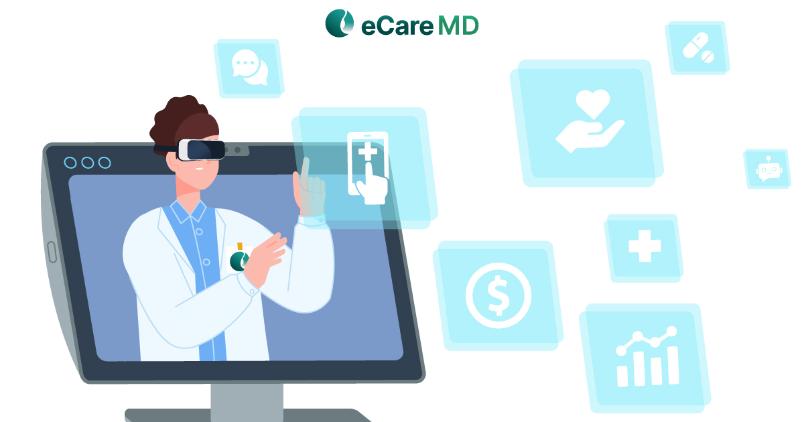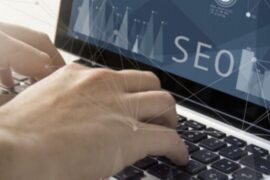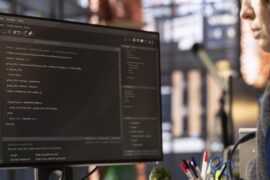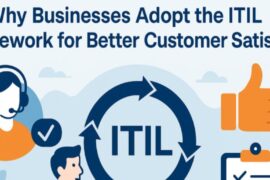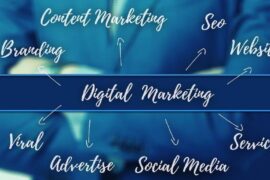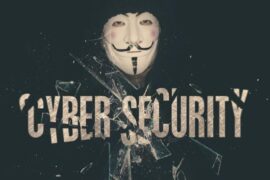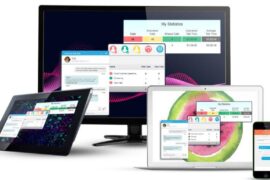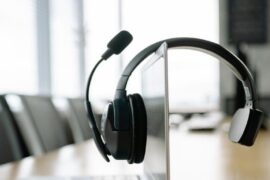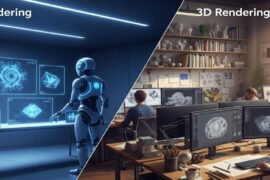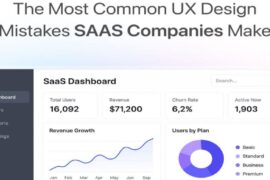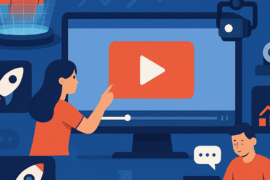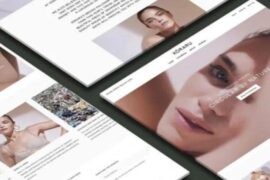The healthcare industry has evolved significantly over the last few decades, and in the last few years a new option has emerged to close the gap between care accessibility for both patients and providers. This has deviated from the traditional healthcare models, changing the healthcare delivery for good.
Accessing healthcare services for someone in remote or underserved areas was quite an effort, where the patient had to travel, wait, and then consult the doctor about their health. Along with that, if the individual is suffering from any chronic illness, the high cost of care would worry them exceptionally. On top of that, the reactive approach used in the traditional healthcare practice made it difficult for the patient to deal with the damage already done.
However, with the introduction of remote patient monitoring, healthcare practices were set to embark on a revolutionary journey to gain easy access to healthcare services. As the name suggests, it deals with remote monitoring of patients using technology, wearable devices, and telehealth platforms.
But how exactly is Remote Patient Monitoring transforming healthcare delivery in the 21st century?
Here are the five ways in which RPM programs with remote patient monitoring software are transforming healthcare.
Enhanced Patient Engagement & Empowerment
Remote patient monitoring emphasizes the active participation of patients in their care journey. Giving them control of their health proactively engages patients in their care activities and empowers them with data to make necessary lifestyle changes. Here are some way ways in which RPM makes it happen:
- Proactive Health Management: RPM tools allow patients to collect their own health vitals and send them to providers in real time. This leads to increased awareness about the disease and empowers patients to adhere to the treatment plans.
- Personalized Care Plans: RPM software enables continuous monitoring, which enables healthcare providers to curate a personalized healthcare plan that caters to the unique needs and preferences of the patient. This will help improve not only health outcomes but also patient satisfaction rates.
- Increased Health Literacy: By giving access to their health data, patients can be more aware of their health, and educational material shared with them helps them to be more knowledgeable about their condition. This helps in a better understanding of the situation and empowers better communication between care providers and patients.
Improved Chronic Disease Management
As there is a steady rise in chronic diseases in the aging population, the implementation of RPM software can help providers improve their chronic disease management in the following ways:
- Real-time Monitoring: Remote Patient Monitoring enables continuous tracking of chronic conditions like diabetes, hypertension, and heart diseases by real-time transmission of patient health vitals data. Because of this, providers can study trends and patterns and intervene in a timely manner by changing the nature of care service from reactive to proactive.
- Reduced Hospital Readmissions: Continuous monitoring enables healthcare providers to detect any potential issues beforehand. By providing better preventive care, RPM can easily prevent further complications of health, helping patients avoid a trip to the hospital and leading to lesser hospital readmission.
- Enhanced Quality of Life: Regular monitoring of patients naturally leads to regular consultations and the real-time analysis of patient vital data, enabling providers to provide immediate feedback. This helps providers easily manage symptoms and helps patients improve the overall quality of their lives.
Cost-Effective Healthcare Solutions
A KLAS Research survey suggested that RPM programs have helped in reducing the overall spending on healthcare services by 17%. Here is how RPM allows both patients and providers to effectively save the growing expense of healthcare services.
- Reduced Healthcare Costs: Typically, to receive healthcare service, the patient had to travel to the hospital and then to other facilities for tests, etc., to receive care service. Here, with RPM, you can virtually connect with your healthcare provider and eliminate transportation costs, which reduces a significant amount of money for the patients.
- Efficient Resource Utilization: Traditionally, providers used to stay with the patient until the care episode was completed, which usually was a lengthy process. RPM, by allowing healthcare providers to monitor patients remotely, they can monitor multiple patients, optimizing their time and resources.
- Preventive Care Savings: Continuous monitoring equips healthcare providers with enough data to help in the easy detection of health diseases. With early detection and proactive interventions through RPM, providers can prevent complications in patient health, helping them to save on costly emergency treatments and hospitalizations.
Easy Access to Care Services
One of the major USPs for remote patient monitoring has been virtual access to care facilities. This has closed the accessibility gaps for remote and underserved populations. Here is how the RPM programs have done it:
- Bridging the Gap: RPM devices and integration with telehealth platforms, RPM enables access to high-quality care for patients in rural or underserved areas.
- Telehealth Integration: RPM software comes with telehealth integration, which enables healthcare providers to conduct consultations virtually. Further access to patient data gives providers enough insights to deliver high-quality care, even across geographical barriers. For instance, if you’re in a remote area, you can still access a physiotherapist in Sydney through telehealth services or other remote care solutions, ensuring you receive comprehensive and personalized treatment regardless of location.
- Continuity of Care: Another benefit that RPM brings to healthcare delivery is maintaining the continuity of care with continuous monitoring and support. This single factor eliminates major barriers that exist in care, such as care distance, waiting, and traveling time.
Data-driven Insights & Predictive Analytics
Since healthcare data forms the base of remote patient monitoring programs, it drives data-driven care practices. Along with that, with the inclusion of predictive analytics it enhances care and has the potential to change the entire nature of care delivery from reactive to proactive.
- Advanced Analytics: Remote Patient Monitoring generates vast amounts of healthcare data that can be used by healthcare providers to identify health trends in patients and predict potential health issues. This way, providers can enhance their care outcomes by taking effective care measures.
- Personalized Medicine: With personalized data of individual patients available in real-time, providers can provide personalized medication plans to individual patients to help them improve their health outcomes.
- Improved Clinical Outcomes: Predictive analytics in RPM software helps patients make informed clinical decisions on the basis of that data, leading to better health outcomes for patients.
Conclusion
With as many as 50 million active patients who frequently use remote patient monitoring and a staggering patient satisfaction of 90%, it can be argued that remote patient monitoring is the future of the healthcare industry.
The lucrative benefits mentioned above, remote patient monitoring has the potential of transforming the healthcare landscape and the norms of practice. From driving patient-centric care to efficiency and accessibility, RPM covers almost every aspect of care delivery and clearly with the help of technological advancements it is shaping the future of the healthcare industry.
So, what are you waiting for? Transform your healthcare practice with remote patient monitoring software today! Click here to book your free consultation call.
Frequently Asked Questions (FAQs)
- What is remote patient monitoring (RPM)?
Remote patient monitoring (RPM) utilizes technology to track a patient’s health data outside of a clinical setting, often in their own home. This can involve devices that measure vital signs, blood sugar levels, or other factors. The collected data is then transmitted to healthcare providers for analysis, allowing them to monitor a patient’s condition and intervene if necessary.
- How can RPM benefit my health (or my practice)?
Assuming you’re referring to Remote Patient Monitoring (RPM), it can significantly improve both your health and your healthcare practice.
For your health, RPM allows for closer monitoring of chronic conditions, early detection of issues, and improved communication with your doctor. For your practice, RPM can mean reduced readmission rates, improved patient outcomes, and potentially lower healthcare costs.
- What types of conditions can be managed with RPM?
Remote Patient Monitoring (RPM) can be used to manage a variety of chronic conditions, including diabetes, heart failure, chronic obstructive pulmonary disease (COPD), and hypertension. RPM allows healthcare providers to monitor a patient’s health data remotely, which can help to improve care outcomes and reduce healthcare costs.
Here are some examples of how RPM can be used to manage chronic conditions:
- Diabetes: RPM can be used to monitor blood sugar levels, weight, and other factors that can affect diabetes management.
- Heart failure: RPM can be used to monitor weight, blood pressure, and heart rate. This information can help healthcare providers to identify early signs of worsening heart failure and take steps to prevent hospitalization.
- COPD: RPM can be used to monitor lung function and symptoms such as shortness of breath. This information can help healthcare providers to adjust treatment plans as needed.
- Hypertension: RPM can be used to monitor blood pressure. This information can help healthcare providers to determine if medication adjustments are needed.
- How does RPM improve chronic disease management?
RPM (Remote Patient Monitoring) improves chronic disease management by enabling continuous data collection, promoting early detection of issues, facilitating timely interventions, and improving patient engagement in their own care.
- Is RPM cost-effective?
RPM can be cost-effective for both patients and healthcare providers. It can reduce hospital visits and admissions, leading to lower overall healthcare costs. However, there are initial setup costs to consider. Studies show that in the long term, RPM programs can be a worthwhile investment.
- Is RPM secure and reliable?
RPM itself is a reliable package format, but security depends on the repository. Official repositories from Linux distributions are secure. Third-party repositories can vary, so check their reputation before using them. Always use GPG keys to verify package authenticity.
- How can I get started with RPM?
Getting started with Remote Patient Monitoring (RPM) involves a few key steps. First, define your program’s goals, such as better managing chronic conditions. Then, identify patients who can benefit and choose user-friendly monitoring devices. Partnering with a company for tech and program management can ease the process.
- Can RPM benefit patients in rural or underserved areas?
Yes, RPM can significantly benefit patients in rural or underserved areas. It bridges the gap by offering remote monitoring and specialist access, reducing travel burdens and improving chronic disease management.
- How can I start using RPM for my healthcare needs?
While you can’t directly implement RPM yourself, you can talk to your doctor about its benefits. If they see a fit, they can enroll you in a program and provide the necessary equipment. RPM programs are designed by healthcare providers to remotely monitor patients with chronic conditions.

